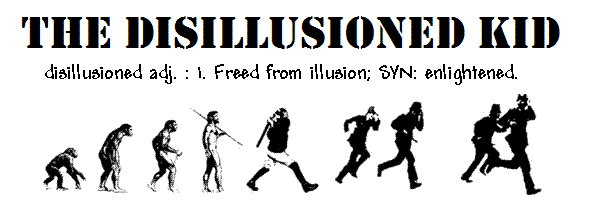Like a bloody-great Taser but more sci-fi
 Every decent science fiction villain needs a giant ray gun with which to threaten our heroes, so it shouldn't come as a great surprise to discover that the US has developed one which yesterday received its first public test.
Every decent science fiction villain needs a giant ray gun with which to threaten our heroes, so it shouldn't come as a great surprise to discover that the US has developed one which yesterday received its first public test.According to the Beeb, the "Active Denial System" (ADS) "projects an invisible high energy beam that produces a sudden burning feeling." We're assured by the US that the weapon is harmless. The ray "penetrates the skin only to a tiny depth - enough to cause discomfort but no lasting harm, according to the military," but they would say that, wouldn't they?
The video on the BBC website of the device in use (which should be available here for a few days) includes some perfunctory comments, from "Security Expert" (i.e. not an expert in the science in question) Will Geddes, about the possible risks of long-term harm and the need for extensive testing before the device enters widespread use. Fortunately for you, I have far better sources than the BBC and hence I'm in a position to tell you what happened previously during the development of the ADS:
Little information about [the weapon's] effects has been released, but details of tests in 2003 and 2004 were revealed after Edward Hammond, director of the US Sunshine Project - an organisation campaigning against the use of biological and non-lethal weapons - requested them under the Freedom of Information Act.So as long as its only used against naked rioters with 20:20 vision, there's nothing to worry about. Well, not much:
The tests were carried out at Kirtland Air Force Base in Albuquerque, New Mexico. Two experiments tested pain tolerance levels, while in a third, a "limited military utility assessment", volunteers played the part of rioters or intruders and the ADS was used to drive them away.
The experimenters banned glasses and contact lenses to prevent possible eye damage to the subjects, and in the second and third tests removed any metallic objects such as coins and keys to stop hot spots being created on the skin. They also checked the volunteers' clothes for certain seams, buttons and zips which might also cause hot spots.
Neil Davison, co-ordinator of the non-lethal weapons research project at the University of Bradford in the UK, says controlling the amount of radiation received may not be that simple. "How do you ensure that the dose doesn't cross the threshold for permanent damage?" he asks. "What happens if someone in a crowd is unable, for whatever reason, to move away from the beam? Does the weapon cut out to prevent overexposure?"Not that battle-weary troops in Iraq or Afghanistan are likely to make mistakes.
During the experiments, people playing rioters put up their hands when hit and were given a 15-second cooling-down period before being targeted again. One person suffered a burn in a previous test when the beam was accidentally used on the wrong power setting.
The BBC emphasise the military applications of the weapon, noting with more than a little understatement that it "could potentially be used for dispersing hostile crowds in conflict zones such as Iraq or Afghanistan." Don't be surprised if we see them on the streets of Washington or even London in a few years time, though. In 2002, Steven Kerr argued, "'Non-lethal weapons' are the technocrats' latest fix to a social problem they can't solve: our human needs and wants," and warned that "if past practice of the US government is a guide, these new weapons will be field tested on the people of Iraq." There's plenty more fun where ADS came from and once they've thoroughly shared the love with the people of Iraq why wouldn't they bring it home for us?
Labels: Non-Lethal-ish, US



















<< Home